
Dubbed as a "Panda Person," artist Zhao Bandi has again employed the panda, his favorite character, but not on his fashion designs or paintings like before. This time, he is using film. Let Panda Fly, Zhao's first film, is expected to premiere on May 29. And like those of his "panda action" art or previous fashion shows, the film has fully tantalized audiences through various promotional events even though there is still a month to go before its premiere.
Nothing like before
Referring to Zhao's first panda film, many people may recall his 2008 public appeal to boycott the Hollywood film Kung Fu Panda. On the grounds that Hollywood was making money while using China's representative image, and Hollywood star Sharon Stone's "karma" remarks about the devastating Wenchuan earthquake that year, Zhao made his opposition to showing the film in China clearly understood by the relative national government institution.
"Part of the reason I'm making Let Panda Fly is because of this," said Zhao, "Many people at that time said to me that since you are so opposed to Kung Fu Panda, why didn't you make your own panda film?"
As an artist, Zhao's most pronounced work was his 1990 oil painting Butterfly, which sold for 27.6 million yuan ($4.47 million) at Council Auction's 2012 spring sale in Beijing. Now crossing over from creating art works to films, Zhao has another strong reason: his deep discontent with current Chinese films.
"Domestic films and their directors seem to be at a loss, [eyeing] too much on the box office, and the aesthetic standard of our whole society is totally a mess, like the Spring Festival Gala, appearing so booming but with little real artistic value," Zhao told the Global Times.
Describing his film as nothing like we've seen before and not fitting into any category, Zhao said Let Panda Fly, which targets people's loss of value during the fast changes of the Chinese society, is an innovative attempt to create new films.
Incorporating usual elements like humor, realism and fantasy, the film looks the same as others, but Zhao said the difference lies in the story and how it unfolds.
"Just like when Stephen Chow's films first appeared before audiences, we felt they were different and strange, but later we accepted them as valuable and very talented," he said, "no one knows what they would be like before the birth of Chow's A Chinese Odyssey serial." (Part One: Pandora's Box and Part Two: Cinderella, which premiered in 1994 and 1995 respectively, are Chow's classic works that founded his position as a post-modern comic master.)
Bandi Panda
Though a newcomer in film circles, Zhao is a master of employing panda elements into his art works. In fact, since starting to use pandas in 1999, his action art and fashion shows have become so famous that Bandi Panda is now a recognized brand.
In 2005, his action art Panda Olympic Games in Berne, the capital of Switzerland, made a great flutter. After gaining permission from the local government, Zhao gave Berne a makeover, making it look like Beijing before its 2008 Olympic Games.
He changed their black bear flags into panda images, and erected signs of Beijing landmarks like Tiananmen Square, Wangfujing Street and Dashilar. Zhao himself even became a torch bearer for his mini Olympic Games.
And his second representative work, a fashion show named "Bandi Panda" staged in Beijing and Paris in 2007 and 2009 respectively, caused much controversy and made Zhao a "topic figure."
The show featured more than 30 sets of panda costumes representing different social identities including migrant workers, "nail house" residents (those who refuse to move out of construction zones), prostitutes, beggars, real estate developers and mistresses. These characters, according to Zhao, are all reflections of China's social reality, but in many people's eyes, the show disgraced the image of the national treasure.
The show's second appearance in Paris in 2009 exacerbated people's questioning of him, saying he was seeking foreign favor by showing the bad side of Chinese society.
Promotional shows fly around
Thoroughly familiar with the use of panda images, Zhao introduced that this time in the new film, pandas are everywhere, existing in both the real space we live in and spiritually. And as the film of a "topic figure," whose works successfully stir up controversy, Zhao's film is already a red-hot topic even before its premiere next month.
Implying their dissatisfying about the country's lack of a film rating system, the production team of Let Panda Fly recently released their adult and children versions of posters for the film. And last week, the team said they are holding a "pig picking" event to select three perfect pigs for its final poster.
"The news of dead pigs (in the Huangpu river) during the previous period inspired me to hold a selection activity for them," said Zhao. "Compared to the panda, which is such a graceful and noble animal to humans, pigs are so inferior. Their purpose is to be eaten from the day they are born."
Making one of the few revelations the director has publicized about the content of the film, Zhao said, "Replacing pandas with pigs also corresponds to the theme of our film, which is to focus on the bottom of society. The three pigs selected will be supported by us to the end of their life."
From the rating of its promotional posters to its "pig shows" and the director's tight lips regarding the film's content, all those promotional activities for the film seem to be like an action art that has fully tantalized audiences. However, unlike art that may stand out on its own regardless of public's opinions, a film must find its audience.
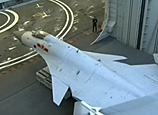



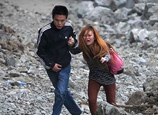
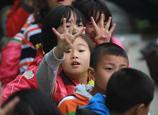
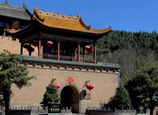
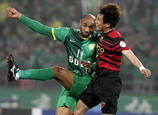
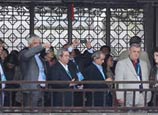







 China’s weekly story
China’s weekly story
(2013.4.13-4.19)


![]()
